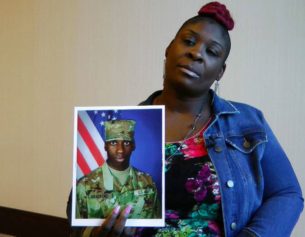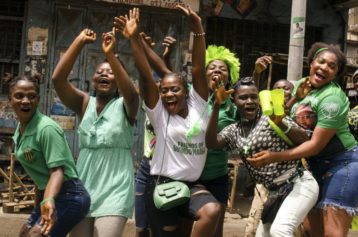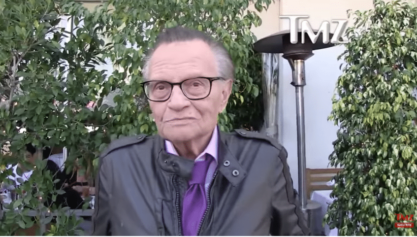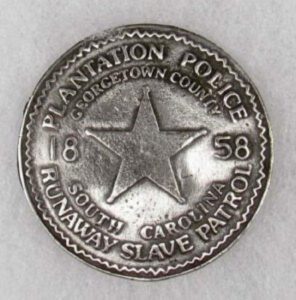
A new book from historian Roxanne Dunbar-Ortiz — “Loaded: A Disarming History of the Second Amendment” — argues that the intent of the Second Amendment was settler colonialism and ethnic cleansing, to perpetuate white settlers’ violence towards Native Americans and the enslavement of African people. She argues that this is the root of gun violence and the debate over guns to this day.
America loves its guns, and the country remains an outlier in terms of the proliferation of firearms and gun violence, with around 5 percent of the world’s population but with nearly half of the world’s privately held guns. Mass shootings and road rage incidents are eerily normal occurrences. The United States has a gun culture that dates back hundreds of years, from colonial times. A provocative new book from historian Roxanne Dunbar-Ortiz places this gun culture within the historical context of white nationalism. The book, “Loaded: A Disarming History of the Second Amendment,” argues that the intent of the Second Amendment was to advance settler colonialism and the taking of Native American lands. Guns were the tool that allowed this assault to happen and to perpetuate violence towards Native Americans and the enslavement of African people. Dunbar-Ortiz argues that this is the root of gun culture in America and the debate about guns to this day.
“Killing, looting, burning, raping, and terrorizing Indians were traditions in each of the colonies long before the Constitutional Convention,” Dunbar-Ortiz wrote in her book, noting that the militias institutionalized in the U.S. Constitution were used to officially invade and occupy native-land. “The Second Amendment’s language specifically gave individuals and families the right to form volunteer militias to attack Indians and take their land.”
The author told Atlanta Black Star that while writing her previous work, “An indigenous People’s History of the United States,” she found that “part of that history is the militias that were set up to kill Indians and for every white man to put himself together with his neighbors to kill Indians and take their land. It was mandated and not spoken about much. They added it as an individual right and they continued it as an official policy throughout the Revolutionary War,” she said.
Dunbar-Ortiz points to the British Proclamation following the French and Indian War, which prohibited expansion in North America beyond the Appalachian ridge. Wealthy slave owners defied the proclamation and traveled into Northwest Territory, surveying land in Ohio Country for future settlement and the expansion of slavery. “That’s what the Revolutionary War was about, going over that British proclamation into Northwest Territory,” she said. Militant Anglo-American settlers waged terror campaigns. George Washington was both a enslaver and speculator in Indian land by his mid-twenties. “George Washington was mapping out the land and selling. He was a real estate broker, selling it. They had real estate interests. That’s how the capitalist economy was built from Native American land and African bodies,” she added.
The militias used to seize Native land also served as slave patrols, which were mandated under the slave codes to control Black people. In “Loaded,” the author noted that as the source from which modern policing originated, these patrols increased as slavery expanded. All white men were required to serve in militias and slave patrols, including rich and poor. However, property owners and slavers were in command of the patrols, as poor whites were unable to compensate a slaver if the human property was killed or injured during capture.
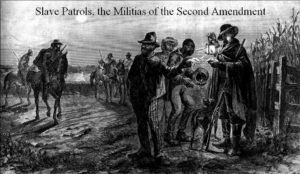
Slave Patrols, the Militias of the Second Amendment | by Patrick Feller (Flickr)
“It’s not just coerced labor. They throw around [the term] slavery, but this was chattel slavery, where bodies were used like real estate, for mortgages, to get capital. They were pieces of paper that were exchanged.” Dunbar-Ortiz said the total value of enslaved African bodies in the U.S. was $4 billion, which was more than the total value of gold and silver throughout the country, the total currency circulation and all the farmland in the South. This labor was “the source of…the Industrial Revolution,” she said.
The Second Amendment in this interpretation is not about gun control, she noted, but the larger issue is that the amendment is all about white nationalism and control, a concept that did not begin with Donald Trump. In the U.S. advocating for gun ownership has been primarily a white proposition.
“300 million guns are owned by 30 percent of people. Ninety percent are owned by white men, and the average number of guns owned are eight,” she said. Coming from rural Oklahoma myself, I’m familiar with white nationalism and how it goes into the white evangelical churches. I grew up knowing about it. It is second nature to me. … I didn’t hear about the Second Amendment growing up.” Throughout most of U.S. history, the Supreme Court has been silent on the Second Amendment, establishing an individual right to possess a firearm in 2008 in District of Columbia v. Heller, subject to regulations.
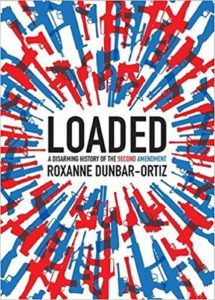
The Gun culture is now propagated mostly through the NRA. “The problem is not the NRA lobby or money. What they do is so minuscule compared to oil companies and agribusiness. What they do is community organizing. There are NRA chapters in every nook and cranny,” she added. “One reason they’ve been able to become so powerful is they can get information to their chapters. They sit in Congress and monitor and ask questions of their legislators…They have this in every state. They can pinpoint and start handwriting original letters at the kitchen table and sending them and say, ‘You are not getting reelected if you pass this.’”
The author insists that people must organize like in the 1960s and 1970s if they want government policies to change. “That’s the only way things will change: First, understanding what we’re dealing with, and then figuring out what is that about and how do we consciousness raise, and not just seeing white nationalism as something that rose with Trump but a mainstream that got suppressed,” she said.
Another part of the solution is finding alliances built on a history of shared suffering. “I realize that the Native American part which I’ve been working on for years is in my mind because I’m a historian,” the author said. “Reading slave narratives had an important effect on me. I found it hard dealing with those documents, the sales and everything. Native Americans don’t understand that slavery was generational trauma. They didn’t know their fates were interconnected with African-Americans.”
